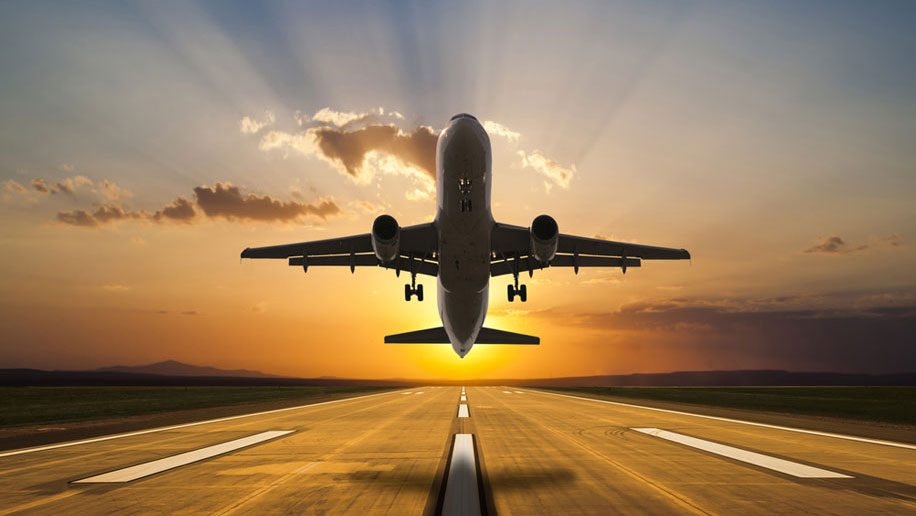Let’s prepare for our 2024 adventures!
Traveling the world is a dream that many share, yet financial constraints often become the barrier. In this era of rising costs, learning the art of frugal exploration is more valuable than ever. Crafting a meticulous savings plan dedicated to travel can unlock destinations previously thought unaffordable. By systematically tracking expenses and identifying areas to reduce daily spending, individuals can allocate more funds towards their travel goals. It is crucial to understand one’s financial flow and to channel a portion of savings specifically for travel.
Adopting a methodological approach to travel planning is fundamental to journeying on a shoestring budget. It entails researching cost-effective routes, staying in budget-friendly accommodations, and embracing public transportation over private taxis. Employing such strategies not only slashes the costs significantly but also provides a more authentic experience of the destinations. Planning in advance and keeping a close eye on promotional travel deals can further stretch the budget, allowing for extended travel or the inclusion of additional destinations.
Being well-informed about the local economy of intended travel destinations can aid in budgeting accurately. Travelers can prioritize countries with lower living costs or visit popular places during off-peak seasons to enjoy reduced rates. This practice aids not only in managing expenses but also offers an opportunity to explore areas without the usual crowds, leading to a more relaxed and intimate travel experience.
Planning Your Budget Travel
When planning for budget travel in 2024, one must consider several key factors to ensure the trip is both economical and enjoyable. A clear savings plan is crucial, as is wise destination choice and timing. Awareness of transportation costs will enable one to make informed decisions about travel logistics.
Setting a Savings Plan
Creating a savings plan is the first step towards making budget travel a reality. They should start by determining the overall travel budget, then break this down into monthly savings goals. Automating their savings can help them stay consistent and resist the temptation to use those funds elsewhere.
Determining Your Destination
Choosing the right destination can make a significant difference in costs. Travelers should conduct a survey to find locations that offer experiences they enjoy without breaking the bank. Factors to consider include cost of living, currency exchange rates, and the presence of affordable accommodations and attractions.
Timing Your Trip: Shoulder Season Advantages
Planning a trip during the shoulder season—the period between peak and off-peak travel times—can offer numerous benefits. Travelers often find that flight costs and lodging are more affordable, and destinations less crowded. It requires careful research to pinpoint these shoulder season windows, as they vary by locale.
Understanding and Planning for Transportation Costs
Transportation can consume a substantial portion of the travel budget. Proactive planning is crucial, from choosing budget airlines to understanding local public transport options. Comparing flight costs across different airlines and booking in advance can secure the best deals. Additionally, they should consider alternative forms of transportation, such as trains or buses, which can often be more cost-effective and offer their own unique experiences.
Accommodation Tactics
When planning a trip on a strict budget, affordable lodging is crucial. It not only reduces expenses but also allows for a longer and perhaps more enriching travel experience.
Choosing Budget-Friendly Accommodations
Travelers should focus on hostels and budget hotels as they typically offer the most cost-effective solutions. Hostels are not only wallet-friendly but also provide a social atmosphere where one can meet fellow travelers. Hotels might offer early booking discounts or special rates for extended stays. Opting for accommodations during the shoulder season—the period between peak and off-peak seasons—can further reduce costs, as prices are usually lower while the weather remains favorable.
Alternative Accommodation Options
Exploring non-traditional lodging such as staying in an Airbnb or considering house swapping can lead to significant savings. Airbnb listings often have tiered pricing, which can be more affordable than conventional hotels, especially for longer stays. Those looking for a more consistent pricing model might prefer all-inclusive packages, which can help in managing the travel budget better by including meals and sometimes even activities.
Utilizing Booking Platforms
Leveraging various booking platforms is a key strategy. These sites often feature comparison tools, allowing travelers to find the best deals. Additionally, some platforms provide loyalty programs or member-only prices, incentivizing frequent use with discounts and perks. Signing up for alerts on price drops or special promotions can also be beneficial to snag a budget-friendly accommodation.
Economical Transportation Means
In 2024, savvy travelers can stretch their budgets further by focusing on the most cost-effective transportation methods. From seizing flight deals to embracing public transport and human-powered travel, the key is to prioritize value without compromising on the journey.
Flights and Flight Deals
To secure economical flights, travelers should monitor various airfare comparison sites for special promotions and flight deals. Airlines often offer discounted tickets during off-peak hours or for last-minute bookings. Subscribing to alert services can provide immediate updates on price drops, helping one to book flights at the lowest possible rates.
- Monitor airfare comparison sites
- Subscribe to fare alert services
- Consider off-peak and last-minute bookings for discounts
Public Transport Systems
Public transport remains a reliable and affordable option for getting around. Cities often have extensive networks of buses, trains, and subways, allowing for easy and efficient travel. Passengers can usually purchase daily, weekly, or monthly passes, which provide unlimited access and result in substantial savings over single-use tickets.
- Utilize buses, trains, and subways for city travel
- Purchase passes for unlimited access and savings
- Plan routes in advance using public transport maps and apps
The Benefits of Walking and Cycling
Walking and cycling are not only free but also provide health benefits and a more intimate experience of a destination. For longer distances, many cities offer bike-sharing programs at a minimal cost. Pedestrians and cyclists can often avoid traffic congestion, making these options both time-efficient and economical.
- Opt for walking or cycling in walkable cities or areas
- Use bike-sharing programs for longer distances
- Enjoy the health benefits and intimate travel experiences
Dining and Food Budgeting
Managing food costs while traveling requires a balance between experiencing local cuisine and maintaining your budget. This section explores strategies for cost-effective eating, from enjoying street food to choosing between dining in and identifying affordable restaurants.
Street Food and Local Eats
Street food offers an affordable way to taste authentic dishes that are often less expensive than restaurant meals. Travelers can enjoy the vibrant flavors of local eats while observing cultural food practices firsthand. For example, markets in Southeast Asia provide a variety of inexpensive yet delicious options.
Dining In vs. Dining Out
Comparing the costs and experiences of dining in to dining out is crucial. Preparing meals at a hostel or Airbnb can drastically cut expenses. A traveler might spend on average $5 to $10 on groceries to cook a meal, whereas a single restaurant meal could cost upwards of $15. Therefore, strategically choosing to dine in, especially for breakfasts and lunches, can make a significant difference.
Finding Affordable Dining
When dining out is preferred, one can identify affordable dining options by leveraging local insights and technology. Apps and websites are invaluable for finding restaurants with positive reviews and reasonable prices. Additionally, eating at off-peak times can result in discounts or specials. For useful pointers on how to travel on a budget that includes dining choices, refer to Nomadic Matt’s Travel Site.
Free and Low-Cost Activities
Traveling on a budget doesn’t mean missing out on experiences. With a bit of research, one can find a plethora of free and low-cost activities that enrich the travel experience without draining the wallet. From free walking tours to exploring public spaces, these options can be both enlightening and entertaining.
Exploring Free Walking Tours
Many cities offer free walking tours as a means for travelers to get acquainted with their surroundings. These tours are often guided by enthusiastic locals who are eager to share their knowledge of the city’s history and culture. While the tours are free, they operate on a tips-only basis, so it’s courteous to give what one can afford at the end.
Visiting Parks, Gardens, and Natural Sites
Public parks and gardens offer a serene retreat from the bustle of urban areas and usually have no entrance fee. Travelers can enjoy a day of relaxation or recreational activities amidst nature. Some notable examples include the vast greenery of Central Park in New York and the picturesque Royal Botanic Gardens in London.
Cultural Experiences: Museums and Monuments
Many museums have days when admission is free or pay-what-you-wish. This allows visitors to access a treasure trove of artworks and historical artifacts without spending a dime. Similarly, monuments and statues are often accessible to view without a fee. For instance, visitors can marvel at the architecture of the Lincoln Memorial or soak in the history of the Berlin Wall.
Maximizing Layovers and Multi-Destinations
Traveling on a budget in 2024 is all about smart planning and leveraging transit times. Especially when it comes to layovers and multi-destination trips, the careful selection of flights and destinations can lead to significant savings and richer experiences.
Strategizing Layover Time
One should consider choosing flights with a longer layover to explore an additional city without extra cost. Layovers of more than a few hours provide an opportunity to leave the airport and enjoy a quick tour of a new place. It’s important to be aware of the visa regulations and entry requirements; some countries offer transit without visa options, which are perfect for short exploratory excursions.
To make the most of layovers:
- Check visa requirements: Ensure that you can leave the airport without a pre-arranged visa.
- Look for layover-friendly airports: Some airports are located close to city centers, making them ideal for short trips.
Planning Multi-Destination Trips
Planning a trip that includes multiple destinations can be an economical way to see more places during one journey. Smart routing can mean that adding another destination before reaching the final stop barely increases the overall cost of travel. For example, flying from North America to Asia might include a stop in a European city at a minimal extra charge.
Key points for multi-destination trips:
- Assess extra costs: Additional stopovers should not significantly increase ticket prices.
- Optimize travel routes: The flight path should be logical, minimizing backtracking to keep costs down.
By strategizing layover times and planning multi-destination trips, savvy travelers can extend their travel experience without stretching their budget.
Targeting Budget-Friendly Destinations
Travelers with an eye on their budget in 2024 will benefit from focusing on destinations where the cost of living is lower and tourism isn’t at peak prices. Identifying regions and cities that offer abundant experiences without breaking the bank is key.
Spotlight on Affordable Regions
- Europe: While Western Europe often comes with a hefty price tag, Eastern Europe provides a goldmine of budget-friendly options. Countries like Poland and Greece promise rich cultural experiences and scenic beauty at a fraction of the cost.
- Asia: Countries like Vietnam, Thailand, and Indonesia are legendary among thrifty travelers for their low-cost accommodations and affordable food choices.
- Central America: Nicaragua and Panama City offer budget-conscious travelers tropical retreats with a low cost of living.
- Africa: Kenya, particularly Nairobi, and Morocco are standout choices with their low costs and vibrant cultures.
- North America: Beyond the USA, travelers can explore Mexico and parts of Canada for a mix of urban and natural attractions that won’t stretch your wallet.
- South America: Countries like Argentina offer tremendous value for money, with rich cultural scenes and diverse landscapes.
- Pacific: Indonesia remains a hotspot for its affordability, especially Bali, with its cheap accommodation and food.
City-Specific Budget Travel Tips
- Valencia and Madrid in Spain offer cheaper alternatives to cities like Barcelona, with a plethora of free attractions and food experiences that are as authentic as they are cost-effective.
- Ljubljana, the capital of Slovenia, is another hidden gem providing lower costs compared to more popular European cities.
- In North America, consider Florida’s lesser-known cities like Tallahassee or St. Petersburg over Orlando or Miami to enjoy sunny beaches and local flavour on a budget.
- Venturing to Cairo in Egypt can be astonishingly economical, with many historical sites like the Pyramids of Giza offering experiences that are both inexpensive and incredible.
- Istanbul in Turkey bridges Europe and Asia and offers an intriguing blend of experiences at budget-friendly prices.
By paying close attention to these regions and cities, travelers can stretch their 2024 travel budgets considerably further.
Travel Budgeting Resources
Effective travel budgeting in 2024 is facilitated by an assortment of digital tools and the shared wisdom of various travel communities. The following resources can assist travellers in crafting a cost-effective travel plan that doesn’t compromise the quality of their holiday experiences.
Budget Planning Tools and Apps
Travelers can take advantage of budget planning tools and apps to meticulously organize their expenses. Platforms like Trail Wallet simplify tracking your spending on-the-go and help you stay within your daily or trip budget. Additionally, currency conversion apps ensure that travellers can avoid costly exchange rate mistakes during international holidays. For accommodation and transport options, aggregators such as Revolut assist in finding competitive prices and managing expenditures efficiently.
Community Forums and Expert Advice
Community forums offer a treasure trove of expert advice and shared knowledge. One can gain significant insights on budget travel tips from platforms such as Lonely Planet’s Thorn Tree or Reddit’s travel threads. These forums are spots where seasoned travelers share their experiences and advice on topics such as affordable destinations and the best ways to save on holiday activities. The direct experiences shared by others support travelers in making informed decisions tailored to their own budgetary constraints.
Safe and Secure Travel on a Budget
When traveling on a budget, it’s essential not to compromise on safety and security. Wise choices in accommodations and a solid understanding of travel insurance can protect both a traveler’s wallet and wellbeing.
Travel Insurance and Safety Tips
Travel insurance is a key investment for travelers. It offers protection from a range of unforeseen incidents, including medical emergencies and trip cancellations. Budget travelers should compare policies carefully to ensure they’re getting adequate coverage at the lowest possible cost. They can use sites like TravelInsurance.com to compare different options.
Safety Tips for Accommodations:
- Research accommodations through trusted platforms that offer user reviews and ratings.
- Ensure that the place has good security measures (like 24/7 reception, secure locks, or safe deposit boxes).
- Opt for accommodations in safer neighbourhoods, even if this means staying slightly further away from city centers.
Avoiding Common Pitfalls and Scams
Budget travelers can become targets for scams, which threaten both their security and finances. Knowledge is the best defence against common travel pitfalls.
Common Scams and How to Avoid Them:
- Overcharged Taxis: Use licensed and metered taxis or rideshare apps with pre-set fares.
- Bogus Accommodations: Book through reputable services such as Booking.com or directly with established hostels and hotels.
- ‘Free’ Offers: Be wary of offers that seem too good to be true, such as ‘free’ tours that end up with pressured sales for expensive products.
Being aware of these common scams and preparing with reliable travel insurance are pivotal in ensuring safe and secure travel on a tight budget.









